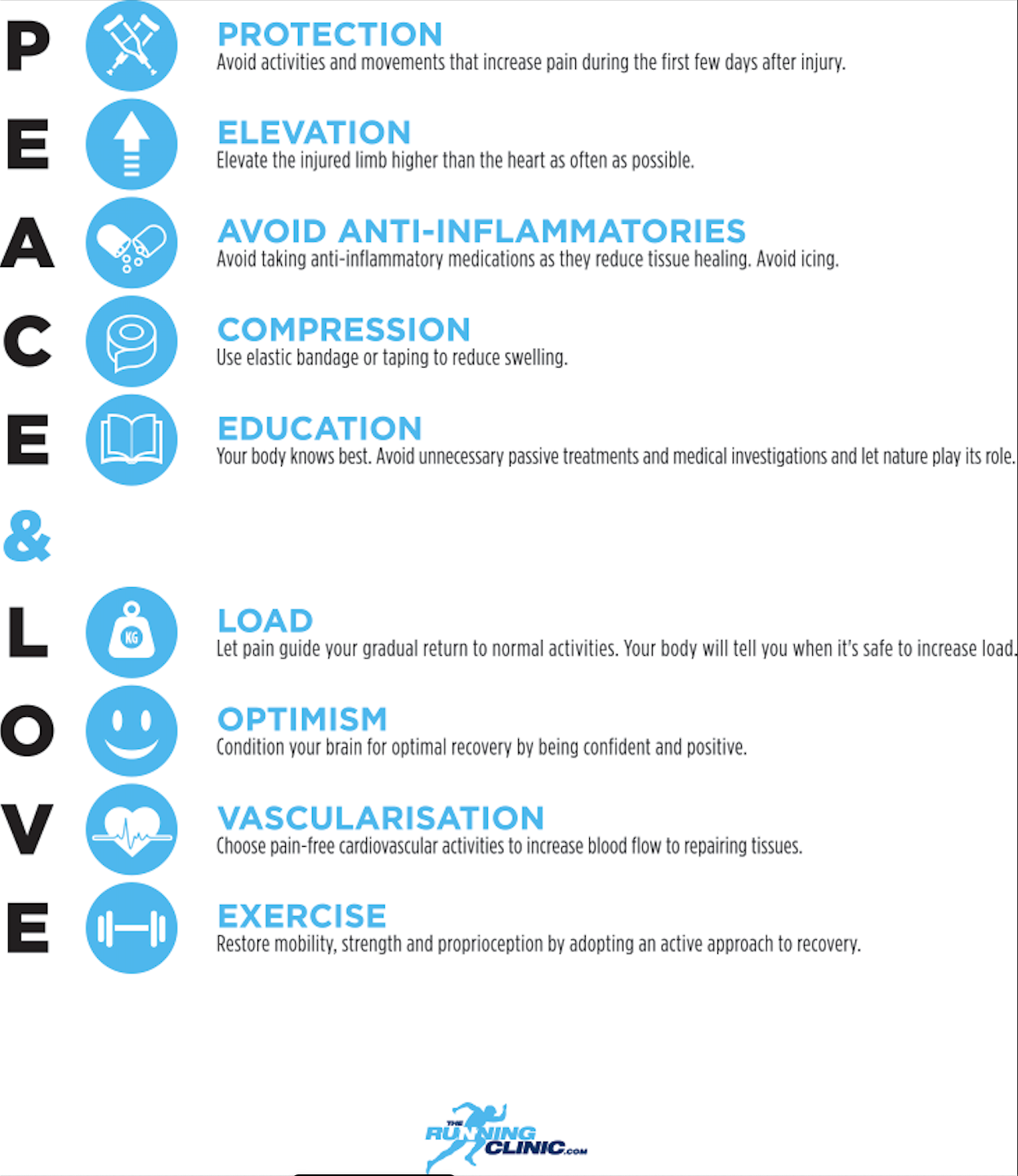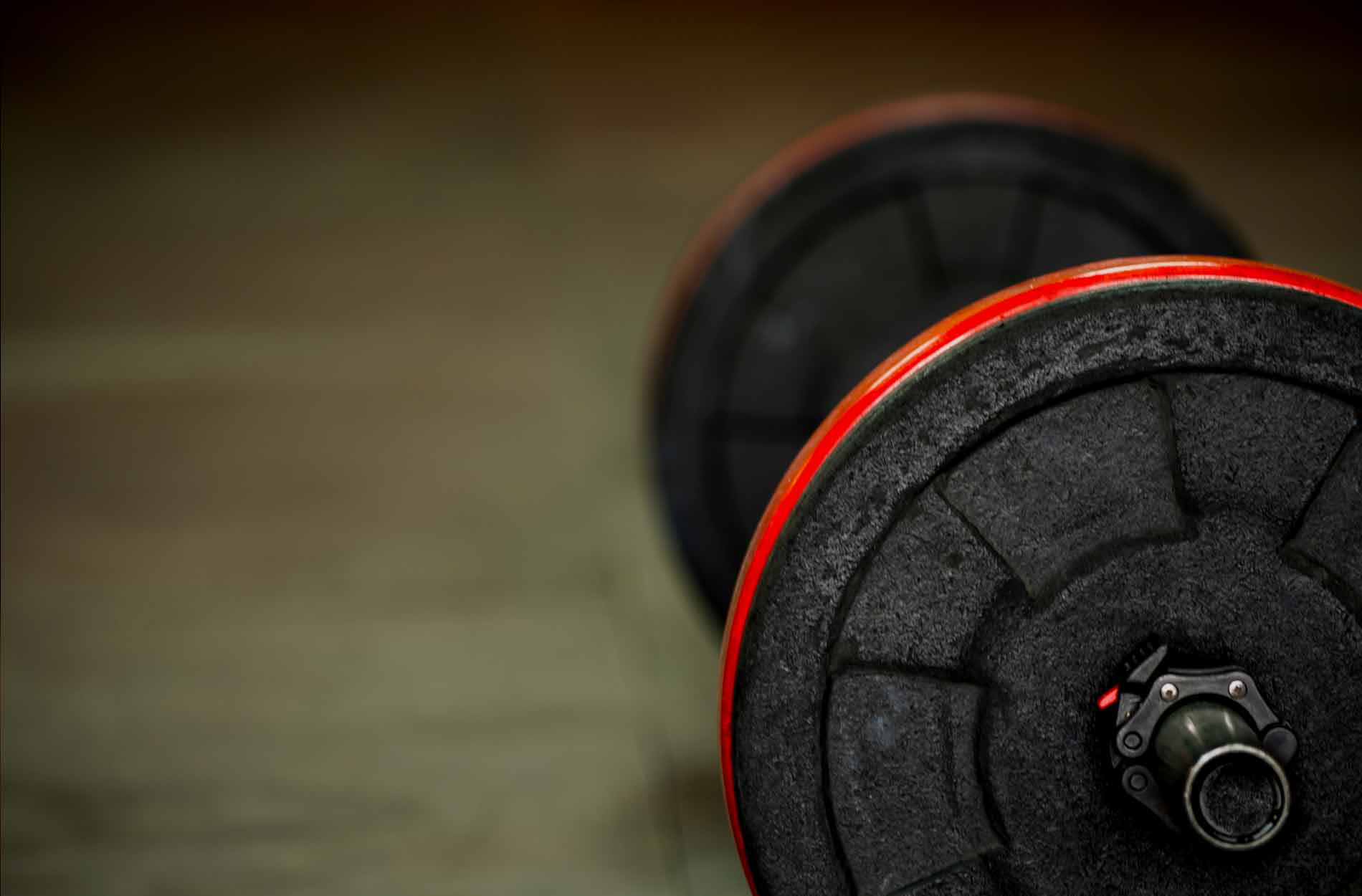Soft tissue injury management
8 May 2021Rice, Police, Peace & Love
Rest, Ice, Compression, and Elevation would often be given out as advice for acute injury management. However, over the years this acronym has evolved and developed based on modern methods and findings. It is no longer seen as beneficial to rest up and put some frozen peas on an injured ankle as this could lead to a delay in recovery.
When I started studying back in 2013, Bleakley (2012), put forward a new approach. Protection, Optimal Loading, Ice Compression Elevation was then seen to be the best advice on how to deal with any new injuries. Protection focusing on avoiding any potential aggravating activities and also use of supports to offload or limit movement for various periods.
The main difference with POLICE vs RICE is the dismissal of Rest to be replaced with Optimal Loading. This basically increments a rehabilitation program where early activity encourages early recovery. Injuries vary so there is no one size fits all approach, and strategies should reflect on the unique nature of the injury. Hence the importance of seeing someone early on during an injury in order optimal recovery.
More recently Dubois & Esculiar (2019) took soft tissue injury management even further and broke it down into two acronyms. PEACE for immediate care and LOVE for subsequent management. See below for further explanation.
Advice for immediately after an injury…
Protect
Rest for 1-3 days this will help to minimise bleeding & reduce the risk of aggravation the injury. Rest should be minimal as this can compromise tissue strength and quality. You should use pain as guidance during this stage.
Elevate
Elevate the injured limb higher than the heart to help with tissue drainage. Despite weak evidence supporting this, it offers a low risk-to-benefit ration.
Avoid anti-inflammatory Modalities
We need inflammation to kick start the healing process! Taking ibuprofen or paracetamol during the early stages of an injury may be extremely detrimental to the healing process and can delay recovery. Even the use of cryotherapy (ice) during the early stages may disrupt inflammation which could impair tissue repair. Although it can still offer some analgesic benefits.
Compress
The use of external mechanical pressure can limit swelling. Research shows that compression after an ankle sprain can reduce swelling and quality of life.
Educate
Educating patients of the active approach to soft tissue management is important, as passive modalities such as massage and acupuncture show little benefit during these early stages (not to say these aren’t important later on). Setting realistic goals is also important, rather than chasing a ‘magic cure!’
Advice after the first 48-72 hours…
Load
Movement and exercise will benefit most muscular-skeletal disorders. Early mechanical stress should be encouraged as soon as symptoms allow without exacerbating pain. This will promote tissue repair and will help to build tissue tolerance through the tendons, muscles, and ligaments.
Optimism
Optimistic patient expectations are associated with better outcomes. Psychological barriers such as fear and depression can represent barriers to recovery. So it’s important to try and remain positive.
Vascularisation
Cardiovascular activity represents a cornerstone in injury management. More research is need for correct dosage, however, pain-free aerobic exercise should be encouraged a few days after injury to boost motivation and increase blood flow. Early mobilisation and aerobic activity can improve physical function.
Exercise
Exercise has been shown time and time again to restore mobility, strength, and proprioception early after an injury. Pain should act as a guide to ensure optimal repair during the subacute phase of an injury. My advice would be to keep it to a minimum and see a good sports therapist for an appropriate rehabilitation plan.
Early management of soft tissue injuries isn’t just about reducing pain, but also encouraging optimal recovery. All things considered, this shows the importance of receiving the best advice following an injury so if in doubt, my best advice would be to offload and get in touch for an appointment ASAP (As Soon As Possible).

References
PRICE needs updating, should we call the POLICE? Bleakley Et al. 2012
Soft tissue injuries simply need PEACE & LOVE. Dubios & Esculier 2019


